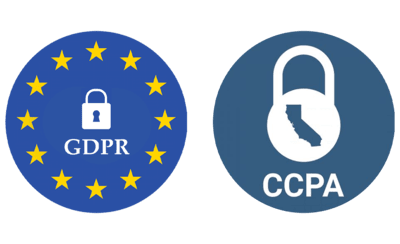How to improve employee mental health?

As an employer in 2023, assuming your employee’s mental health is not your responsibility is very 2019(*).
With COVID, the great resignation, followed by quiet quitting, and now the rise of grumpy staying, every news article and research on the topic show that attending to your team’s mental health should be on every HR department’s top priority list.
1. What the data shows
It is easy to assume “this does not concern us”, After all, mental health is a very private matter. But it impacts everyone.
And if we refer to the data, we have to admit that, chances are, some of our very own employees are struggling.
Here are some very clear numbers that speak for themselves**:
- Almost 15% of people experience mental health issues at work.
- Almost 30% of employees describe themselves as “miserable” at work and 60% as “emotionally detached”.
- Since COVID, more than 80% of companies have made an effort to address mental health in the workplace, but many employees still feel uncomfortable discussing their problems or do not feel adequately supported.
This is a real shame, as research also shows that employees who consider themselves “happy” at work are on average 13% more productive!
And that translates into very real money.
As an example, in the UK, mental health issues at work are estimated to cost employers about £56 billion every year! (When we include sick days, presenteeism, turnover, etc.)
Not all industries are equally suffering.
Of course, numbers vary depending on countries, regions, demographics, and types of work.
It seems like the tech, finance, construction, and engineering industries are on the podium when it comes to the poorest mental health, with extra pressure, stress, and long hours extending into the evenings and weekends.
So what can you, as an employer, do?
First things first, before coming up with “brilliant ideas,” it is always best to figure out what your employees really want and expect from you.
Creating online surveys, suggestion boxes, and feedback sessions are some of the many ways to get real data about your employees’ needs when it comes to well-being and mental health at work.
2. What your employees want & need
What it comes down to is actually pretty “basic,” but those simple “human needs” are often whisked away when the focus is solely on reaching KPIs and increasing productivity.
- Physical health and safety: that goes from ergonomic workstations to preventing accidents and maintaining a clean environment.
- Work-Life Balance & flexibility: Employees want to have the flexibility to implement a work-life balance. They need to feel trusted by their employers and teammates to do the work while being able to address other aspects of their lives that play an important role in ensuring their well-being. Giving more options to your employees regarding where and when they work could really improve the overall mental health of your team. Employees value a balance between their work and personal lives. They want reasonable working hours, opportunities for flexible scheduling, and the ability to disconnect from work when they’re off the clock.
- Recognition and Appreciation: Employees are people. Most people want to be recognized and receive confirmation that what they are doing is good and appreciated by the manager as well as by their peers and the company in general. Not only does it boost employees’ sense of worth and mental health, but it also increases engagement which is essential for the company.
- Being heard: Just as essential is the feeling that we are heard and that our voice matters. It may sound obvious, but especially in large companies, many people feel isolated and not aware of the procedure to be heard by the leadership teams. Simply putting in place clear processes for feedback and suggestions that are then addressed and taken into consideration can change the way employees feel valued at work.
- Clear Communication: Effective communication within the organization is essential. Employees want to be informed about company goals, changes, and performance expectations, just as they want to be able to respond and suggest changes and ideas. Communication needs to be a two-way street.
- Social Connections: whether you are a remote or on-site team, a supportive and friendly environment is beneficial to the overall well-being of the team and its individuals. It is important to allow time and space for informal chats and get-togethers (on and off-line) outside of the work setup to reinforce relationships and collaboration within the work setup.
- A Sense of Purpose: Once again, everyone appreciates knowing that what they do is useful to others or the greater good. It is important for anyone’s mental health and self-esteem to know that our participation, the work that we do, and our presence in a team have a purpose.
- Fair compensation & career development: This has a lot to do with feeling acknowledged and finding a sense of purpose. But also with having a healthy work-life balance by being able to provide for themselves and potentially their family.
- Mental Health Support: We see it more and more; employees are expecting mental health support from their employers. Whether it is access to counseling services, stress management programs, or initiatives to reduce workplace stress, with the rise of such expectations, many companies turn to specialized third parties, which can offer the appropriate services to support individual employees and the team as a whole, as we do at Siffi through our different tools.
Who has a part to play?
Everyone, from the employee to the CEO.
Addressing mental health in the workspace is not easy because it touches upon very personal and individual feelings and states of mind, but it would be wrong for the leadership to ignore it as they play a very impactful role in their teams’ well-being at work.
CEOs, managers, and HR representatives should work hand in hand with the employees to keep themselves on top of mental health practices and support available, as well as regularly assess their impact, identify triggers, and adapt the policies accordingly.
Managers
It is not easy to feel confident about a topic we are not familiar with. Yet, a manager needs to be confident enough to welcome team members’ issues and mental health-related problems. That is why it is important that managers learn more about mental health, not only on their own but also through training regularly organised by the company. That will allow us to make sure that every manager is aligned with business practices and values.
The manager is the first point of contact for most employees; they need to lead by example:
- Promoting clear and open communication
- Praise in public, criticize in private
- Having clear expectations
- Doing regular check-ins and seeking feedback
- Building a friendly atmosphere
- Talking about mental health without stigma

Human Resources
The HR department plays a key role when it comes to mental health in the workplace.
It is their role to keep themselves informed of the newest regulations and research and put together a mental well-being strategy for the company.
It can be expected of them to:
- roll out and review their strategy regularly.
- organise training for managers.
- offer confidential resources.
- run an awareness campaign.
CEOs
Last but not least, the founders and CEOs should also lead by example. Even if they do not have regular encounters with all employees, it is important that they are well-versed in the company’s policy as well as put the strategy into practice with their direct collaborators. They have a part to play in normalizing the topic and making sure it is regularly on the agenda of the leading teams. As the visionary for the company, they should make sure the right values are promoted and the right focus is being put on mental health and well-being.
Improving mental health is an ongoing process.
It demands the focus and commitment of all parties in the company, from the top leadership roles, putting mental health as an agenda priority for human resources and management, and rolling out well-being strategies for the employees who are encouraged to utilize these resources and provide feedback on them in order to create an ongoing virtuous circle that will ultimately increase satisfaction and productivity.
Want to know more about how Siffi is helping organisations? Check out our services
Recent Posts
 mental well-being and coaching services
mental well-being and coaching services 

